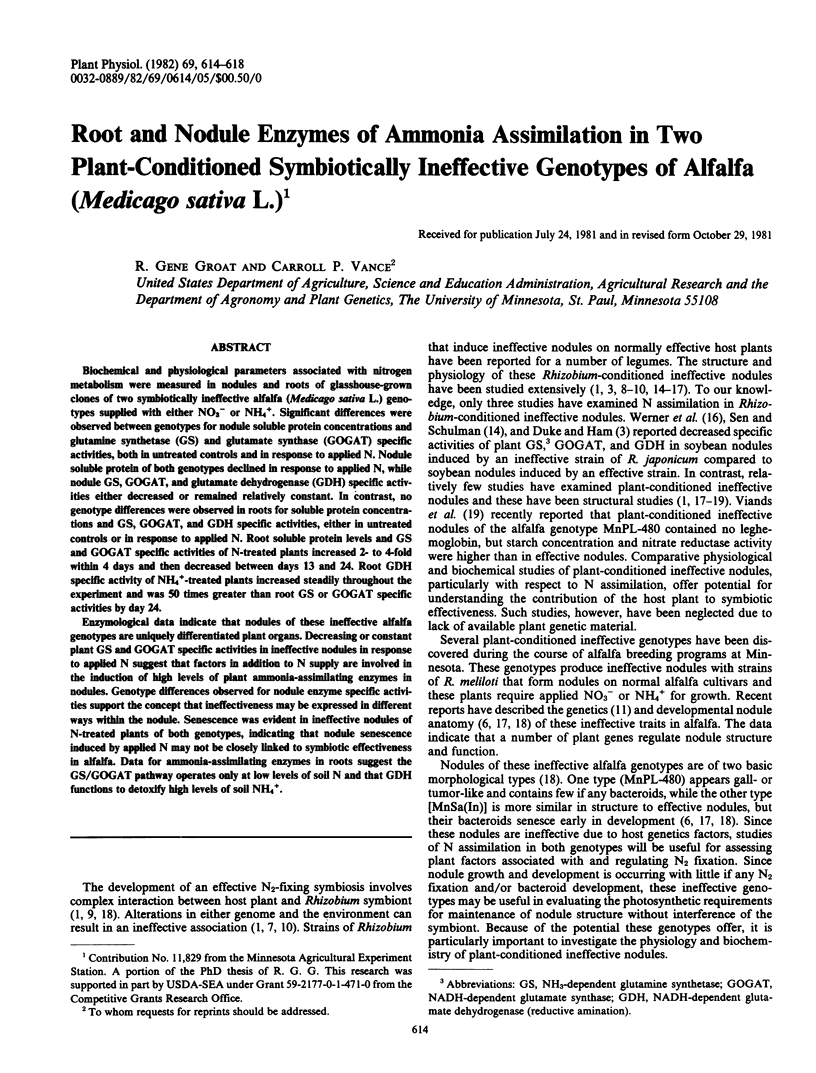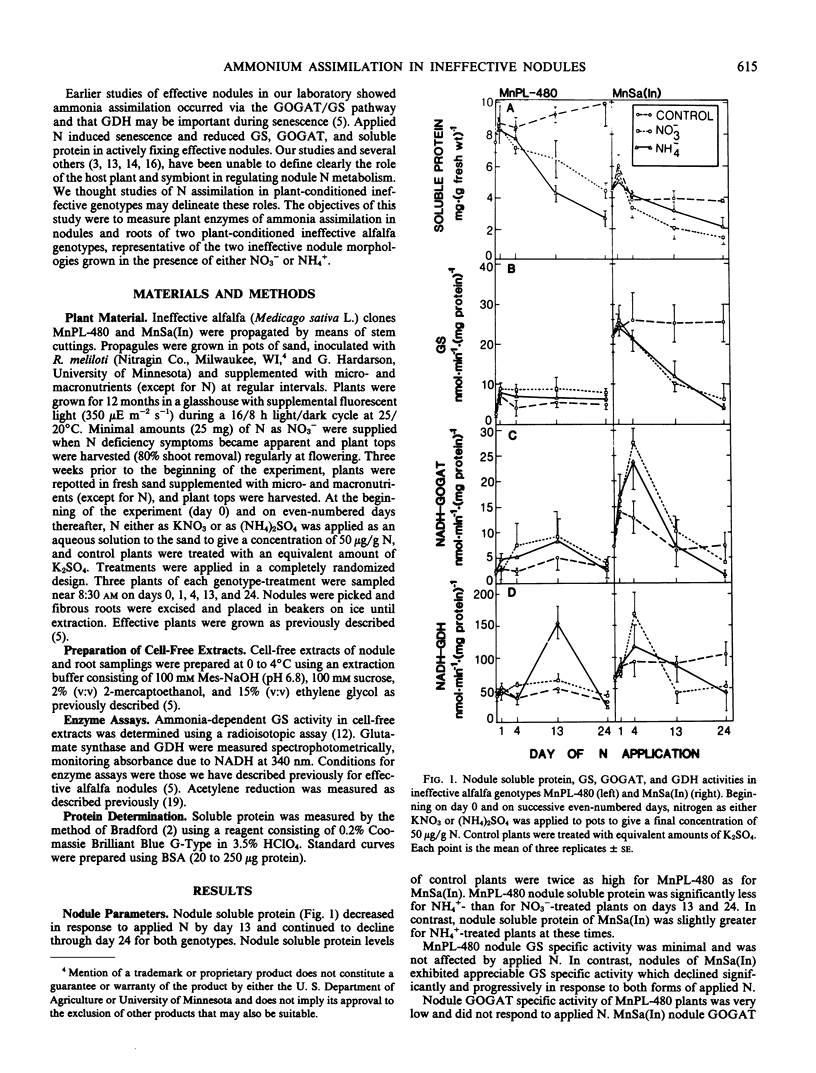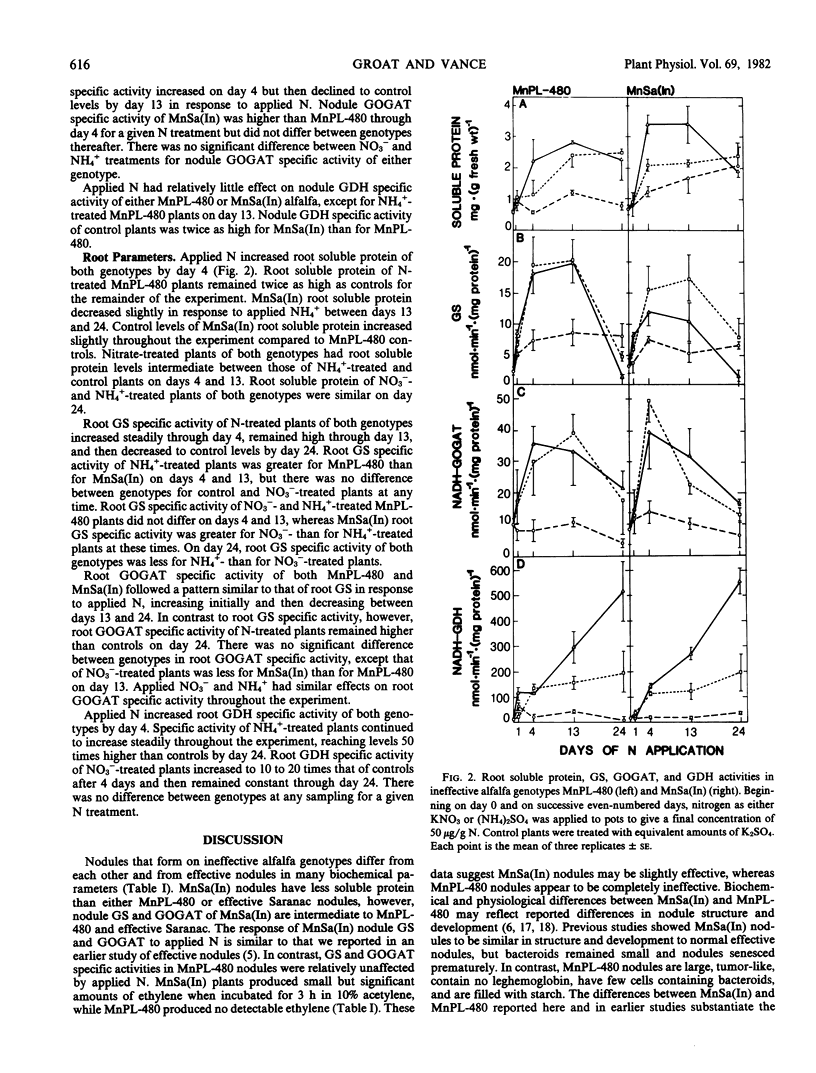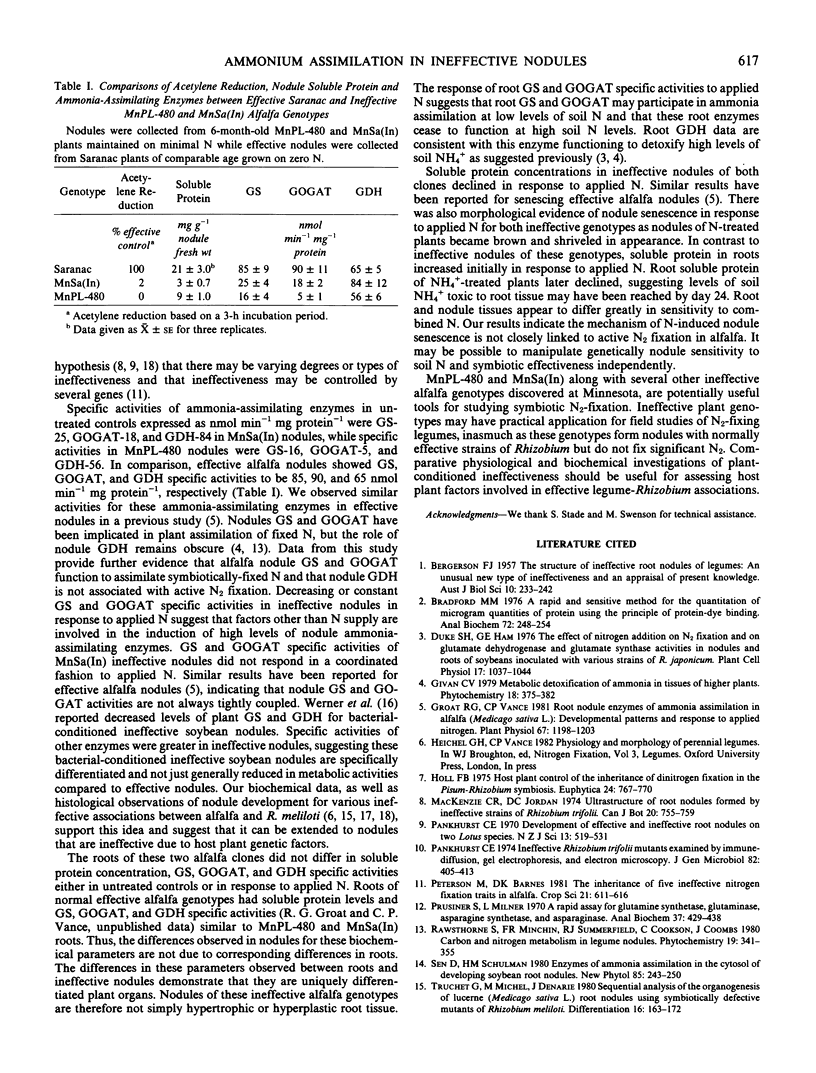Abstract
Biochemical and physiological parameters associated with nitrogen metabolism were measured in nodules and roots of glasshouse-grown clones of two symbiotically ineffective alfalfa (Medicago sativa L.) genotypes supplied with either NO3− or NH4+. Significant differences were observed between genotypes for nodule soluble protein concentrations and glutamine synthetase (GS) and glutamate synthase (GOGAT) specific activities, both in untreated controls and in response to applied N. Nodule soluble protein of both genotypes declined in response to applied N, while nodule GS, GOGAT, and glutamate dehydrogenase (GDH) specific activities either decreased or remained relatively constant. In contrast, no genotype differences were observed in roots for soluble protein concentrations and GS, GOGAT, and GDH specific activities, either in untreated controls or in response to applied N. Root soluble protein levels and GS and GOGAT specific activities of N-treated plants increased 2- to 4-fold within 4 days and then decreased between days 13 and 24. Root GDH specific activity of NH4+-treated plants increased steadily throughout the experiment and was 50 times greater than root GS or GOGAT specific activities by day 24.
Enzymological data indicate that nodules of these ineffective alfalfa genotypes are uniquely differentiated plant organs. Decreasing or constant plant GS and GOGAT specific activities in ineffective nodules in response to applied N suggest that factors in addition to N supply are involved in the induction of high levels of plant ammonia-assimilating enzymes in nodules. Genotype differences observed for nodule enzyme specific activities support the concept that ineffectiveness may be expressed in different ways within the nodule. Senescence was evident in ineffective nodules of N-treated plants of both genotypes, indicating that nodule senescence induced by applied N may not be closely linked to symbiotic effectiveness in alfalfa. Data for ammonia-assimilating enzymes in roots suggest the GS/GOGAT pathway operates only at low levels of soil N and that GDH functions to detoxify high levels of soil NH4+.
Full text
PDF




Selected References
These references are in PubMed. This may not be the complete list of references from this article.
- Bradford M. M. A rapid and sensitive method for the quantitation of microgram quantities of protein utilizing the principle of protein-dye binding. Anal Biochem. 1976 May 7;72:248–254. doi: 10.1016/0003-2697(76)90527-3. [DOI] [PubMed] [Google Scholar]
- Groat R. G., Vance C. P. Root Nodule Enzymes of Ammonia Assimilation in Alfalfa (Medicago sativa L.) : DEVELOPMENTAL PATTERNS AND RESPONSE TO APPLIED NITROGEN. Plant Physiol. 1981 Jun;67(6):1198–1203. doi: 10.1104/pp.67.6.1198. [DOI] [PMC free article] [PubMed] [Google Scholar]
- MacKenzie C. R., Jordan D. C. Ultrastructure of root nodules formed by ineffective strains of Rhizobium meliloti. Can J Microbiol. 1974 May;20(5):755–758. doi: 10.1139/m74-115. [DOI] [PubMed] [Google Scholar]
- Prusiner S., Milner L. A rapid radioactive assay for glutamine synthetase, glutaminase, asparagine synthetase, and asparaginase. Anal Biochem. 1970 Oct;37(2):429–438. doi: 10.1016/0003-2697(70)90069-2. [DOI] [PubMed] [Google Scholar]


